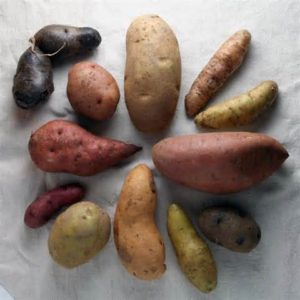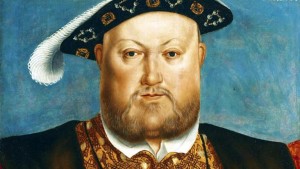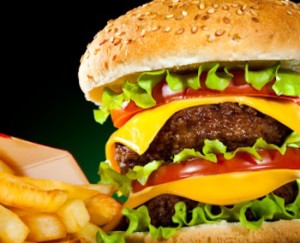Do you think people ate healthier diets 100 years ago? 200 years ago? 1000 years ago? Was the traditional diet of humans a diet we should aspire to eat today?
Many books have been written glorifying the diets of our ancestors of only 100 – 150 years ago, and entire dietary movements are based upon imagined views of what our ancestors back at the dawn of human history apparently ate or did not eat. Both opinions believe a more ‘traditional’ diet will produce better health.
Let’s take a trip back in time to find out some facts about traditional diets.
Prehistory and protein
For a long time, anthropologists believed the earliest humans ate a high protein diet. They theorised that protein was responsible for humans developing big brains. The role of dietary carbohydrates, such as starchy vegetables and grains, was overlooked or thought to lead to lower intelligence.
This thinking, of course, has fuelled the Paleo movement.
The problem is – this thinking is incorrect. Human babies are raised on breast milk. At the time of life when their heads and brains undergo the fastest growth in their lives, they are nourished on a liquid containing less than 1% protein! This is a paltry amount – yet sufficient for growing a big brain. Our ancestors therefore did not need high protein diets to develop relatively large brains.
If you thought the earliest humans got most of their calories from gnawing on woolly mammoth bones and other meaty sources – you may be mistaken.
A large study from the University of Sydney, recently published in the Quarterly Review of Biology, has provided fuel for the fire that it was in fact cooked starchy carbohydrates (like tubers), and not meat, that was the main food that sustained early humans.
Starch is, chemically-speaking, just long chains of glucose encased in fibrous packaging. The human brain uses more than half of the blood’s glucose at any given time – and it is difficult to have enough glucose to keep the brain functioning and growing if protein is the main part of the diet.
Prehistory and starches
A <Cambridge University study> of early human remains indicated that the “Starch (tuber) diet isn’t something that happens when we started farming, but rather, is as old as humans themselves.”
Even in the days where many people wandered as nomads in search of sufficient food, starchy tubers were far more accessible than fast-moving game, and provided more of the calories our brains thrive on. In Africa today, most traditional rural people live on tubers or grains they grow and some leafy greens, with only a little meat if obtainable.
The first part of human digestion begins in the mouth. Humans have six genes that code for salivary amylase, and here in the mouth, where digestion begins, our saliva contains one digestive enzyme only – the one that breaks down starches. If humans were not designed to eat starchy foods first and foremost from the beginning of time, why would we have saliva with the starch-breaking enzyme, amylase? Clearly, the break-down of starch is a vital part of our design.
Anthropology researchers suggest that if we want to have the big brains of earlier humans, we need to eat as they did: eat underground starchy foods such as potatoes, taro, yams and sweet potatoes,
as well as more recently introduced starchy grains like wheat, rye, barley, corn, oats, quinoa and millet.
And, in fact, a growing number of human skeletons from ‘the dawn of time’ are now being excavated – with evidence of starchy grains (like sorghum) between their teeth.
Because that’s what it appears our traditional diet actually was.
Ancient History
The study of wealthy people, the kings and nobles of any country in history – sees them all eating rich meaty diets. The pharaohs feasted on quail and other meats daily, as did the kings of Ancient Persia and most other civilisations. The poor people were still eating starches, but the wealthy preferred animal products.
And they paid for their choices. Mummies in Egyptian tombs bear witness to their indulgence with tumours and cardio-vascular disease seen in them on modern scans.
The Bible records the morbid obesity of some kings who were so fat they could barely lift food to their mouths – and their early deaths. It also records the Babylonian king Nebuchadnezzar, whose court feasted on meat, and were less healthy than Daniel and his friends who chose to eat their traditional plant-based diet.
The Middle Ages
In the Middle Ages, we read of great feasting halls and the extravagant amount of flesh eaten at celebrations. We see evidence from portraits of English kings what this dietary plan did for them. The life expectancy of royals of the British Isles who made it through childhood was the mid-40s. Very old age was the mid-60s and few made it that far.
Diabetes began amongst the nobles of Britain who could afford sugar in quantity. Their muscle cells were already full of fat from their fatty diet, which blocked the extra sugar needing to get into the cells.
You can read <here> how a fatty diet is necessary in order to develop Type 2 diabetes, and how curbing fat is the way to reverse the disease.
More Recent History
A hundred years ago, most Westerners were eating meat and dairy foods regularly. However, records show that they actually ate half or less of the meat we now eat and almost a quarter of the dairy foods. We eat 400% more cheese in Australia today than in 1900.
For the world’s masses, the traditional diet was not meat and dairy-based at all – it was starch and vegetable-based. It included comparatively little meat and fat, compared to what we think is normal fare today.
Those ancestors who actually were eating a lot of meat and fat – the nobles and the priests – were dying young or got degenerative diseases, just like today.
The ordinary people were eating mostly potatoes and bread and rice.
The traditional diet for today?
In the distant past, only the rich people ate a diet full of meat, fat and milk products. This was not a traditional diet for most of the world’s population. The real ‘traditional diet’ of most people was actually starchy grains or tubers and vegetables. We’ve twisted things around today and imagine a ‘traditional diet’ was full of meat and cream and cheese. But it wasn’t for most people.
Our imaginings help us justify our own poor food choices.
Today we are all comparatively wealthy. Everyone can afford dairy products and meat, even if it’s only a hamburger from a fast food restaurant.
The kings and nobles of the past would express disbelief if they were to see the ways we are able to live today and the incredible amount of food available.
No longer are rich foods kept for special celebrations – every meal, every day has become a celebration meal, loaded with milk, meat and fat – and all eating like that are suffering for it.
Human physiology (the way the body works) has not changed through history.
What made people sick then makes us sick now.
A diet based around animal foods still causes inflammation and ultimately disease. And for most people, leads to earlier death, just as it has through history.
It’s time to ignore traditions that do us no good, and go with nutritional facts that work.








0 Comments